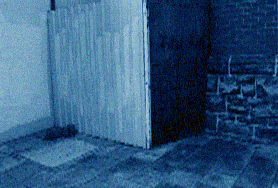

PAUL THOMAS
|
PROJECT
This quote used by Christine Boyer contextualises some of my spatial fascination, expanding on my recent research of the private and social spaces of the verandah. My work was an exploration of social and cultural values expressed through the material use of space. Exploring the space of the verandah has lead me to the more intimate hidden spaces, the lag time spaces developed through major architectural city structures. Lag time spaces are the forgotten spaces left between disparate architectural developments. These lag time spaces are being revealed through a technological renegotiation with the city. Spaces which were put on hold are now to be socially re-assessed. The disembodied city is subject to stealth technologies which create their own forms of emergence. RATIONALE The contextual importance of these 'lag time' spaces is to be revealed through this project, by the re-evaluation of what Paul Virilio's calls the city which has lost its form. These architectural spatial gaps or temporal breaks will be processed as significant areas of meaning. These areas which are marginalised spaces are left out of our accounts of the city. Sigmund Freud stated, detail owes its privileged status to the primary process of displacement. As these spaces are being revealed by technological change they expose the way we conceived of the city. This work will explore and explain these concerns, re-evaluating a qualitative relationship to the cities spatiality. The research investigates the stealth terrain of our cities as Boyer states "The result is an ability to map our contemporary terrain, to envision space and representational forms, and thus to weave things together, to conclude, to be able to act". Henri Lefebvre talks of space in 'The Production of Space'. of 'abstract fetishised space'. The lag time space between buildings, can be seen to have developed a non critical context in the space of the city. Lefebvre suggests 'users who cannot recognise themselves within it and a thought which cannot conceive of adopting a critical stance towards it' . The lag time spaces being difficult to conceive of are now areas that are critically revealing. I want to create a theoretical link by investigating the relationship between eulogised spaces and the lag time spaces; by exploring architectural areas of forced delay. These lag time spaces which have been put on hold through our technological desire for speed are now through that desire, emerging. This will be contrasted by the eulogised space, where the space that is touched upon by the imagination cannot remain an indifferent space. Electronic technologies contain spatial and temporal paradoxes that have yet to be fully researched, therefore there is a constant challenge to understand both the nature of the new media experiences and the composite realities they create.
E-Mail: p.thomas@curtin.edu.au |
 "It is curious that while CyberCities narrate the dematerialisation of physical space and chronological time, space has become a dominant issue with postmodern criticism. Edward Soja in Postmodern Geographies argues that the nineteenth century's affair with progress valued time over space, allowing the latter to hide things from us, to be used as a veil drawn over the surface".
"It is curious that while CyberCities narrate the dematerialisation of physical space and chronological time, space has become a dominant issue with postmodern criticism. Edward Soja in Postmodern Geographies argues that the nineteenth century's affair with progress valued time over space, allowing the latter to hide things from us, to be used as a veil drawn over the surface".